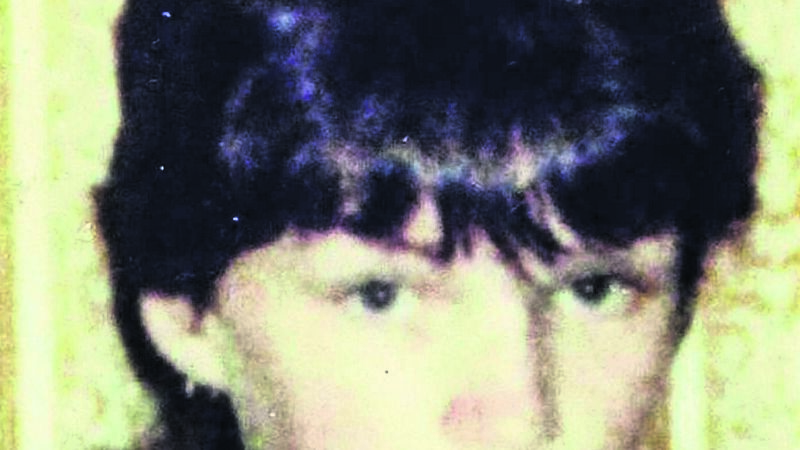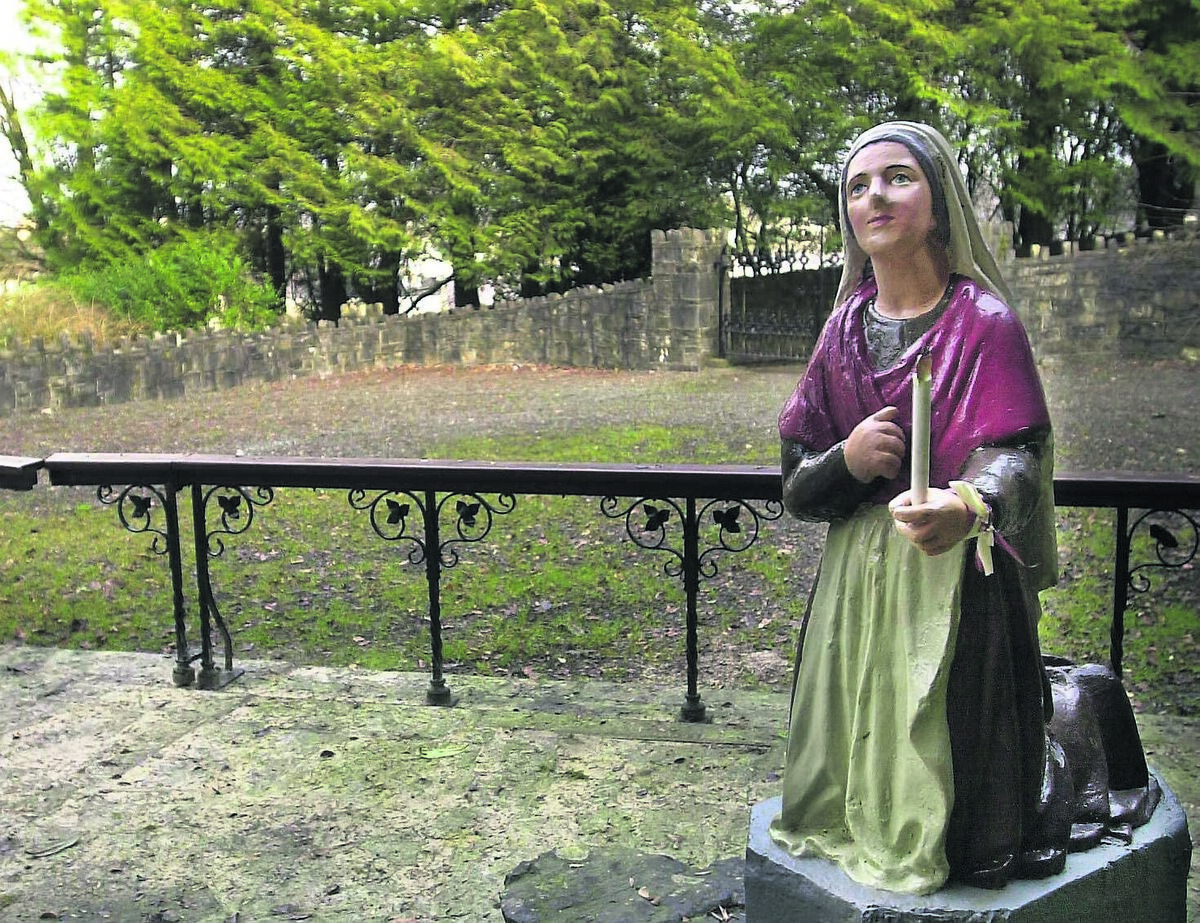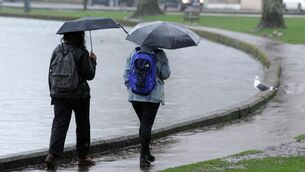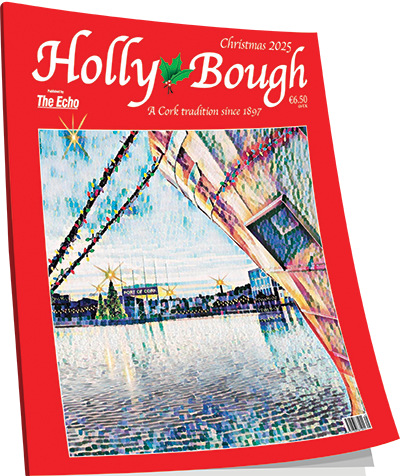40 years on: Did Ann Lovett’s death bring all the needed change?

THE death of Ann Lovett, hours after giving birth beside a grotto in her home town, on Tuesday, January 31, 1984, became a watershed event in Irish life, and its effects are being felt even now, 40 years later.
THE death of Ann Lovett, hours after giving birth beside a grotto in her home town, on Tuesday, January 31, 1984, became a watershed event in Irish life, and its effects are being felt even now, 40 years later.
For many people, it started, like a lot of things did in those days, in the words of the signature tune, on The Late Late Show. As the Late Late wrapped on Saturday night, February 4, the host, Gay Byrne, previewed the front page of the next morning’s Sunday Tribune.
“‘Girl, 15, Dies Giving Birth In A Field.’ My goodness me,” said Byrne, casting the paper aside. “And that happened in Co Longford, apparently. Nothing terribly exciting there.” Four days earlier, on a freezing, wet Tuesday afternoon at the end of January, Ann Lovett, a warm, clever and artistically gifted 15-year-old schoolgirl from Cnoc Mhuire school, had gone to the grotto of the Blessed Virgin, beside the grey St Mary’s Church which looms over Granard, to give birth to her son.
Ann had kept her pregnancy a secret, but after her death some of her contemporaries would say it had been well known in Granard.
She brought scissors with her to the grotto, with which to cut the umbilical cord. Ann’s baby boy — later named Pat — was stillborn.
Around 4pm, three other schoolchildren found her schoolbag and heard her crying by the grotto. They raised the alarm and a local farmer came to their aid. He ran to the nearby house of the priest, Canon Gilfillan, who told him “It’s a doctor you need”.
“I need you too, Father,” he replied. “The baby is dead and the little girl might be dying too.”
Haemorrhaging heavily, and in terminal shock, Ann was carried to the priest’s house, where a doctor came and drove Ann to her home. There, an ambulance arrived, far too late. Ann died in Mullingar Hospital, around 6pm. Three days later, on the Friday, Ann Lovett and her baby were buried, quietly, in Granard.
Emily O’Reilly, now European Ombudsman and then a Sunday Tribune journalist, was tipped off by an anonymous call and broke the story.
Her editor, Vincent Browne, made a hard call and named Ann, overriding concerns about her family’s grief. It personalised the story, making Ann a real person at the centre of what soon became a national outrage.
Soon, Gay Byrne overcame his earlier indifference, as his radio show was inundated with letters from women telling their own stories of misplaced shame and hidden grief. He read out their stories, saying later, “Too many letters. They couldn’t be ignored.” The Ann Lovett letters became a seismic moment in Irish life.
Holly Cairns, leader of the Social Democrats and Cork’s only female Oireachtas member, says she often thinks of Ann Lovett. “It was a watershed moment in Ireland, in part because it was so tragic and so sad, and I think it illustrates how misplaced shame was in Ireland, that a 15-year-old girl went through that.
“It’s an awful thing when someone’s life becomes a watershed moment, but I think it shows how damaging our regressive laws and society were. We talk about these things like they were so long ago, and they’re not. The last mother and baby homes closed in the late 1990s, and in Cork, Bessborough only closed [as a mother and baby institution] in 1998,” Ms Cairns says.

The Cork South West TD cites the Mother and Baby Institutions Payment Scheme Act 2023, which excludes those who were in an institution for less than six months, as ongoing evidence of an Ireland she believes is still in many ways regressive.
Around 68,000 people are believed to have gone through the religious-run system for unmarried mothers — but only 34,000 survivors will be eligible for redress.
“You could have your child taken from you...and somehow you’re not eligible for redress. That treatment of those women is still going on today. We talk about it like it’s historic but it’s not.”
Ann Lovett would have been 56 this year. She was born on April 6, 1968, in Cobh General Hospital, the third-youngest of nine children born to Diarmuid and Patricia Lovett.
The family lived on Grahams Terrace, overlooking Cork Harbour, until 1972, when Diarmuid moved the family back to his native Kilnaleck in Co Cavan. In 1981, they bought the Copper Pot pub on the main street in Granard, with the family living over the bar. The business did not thrive.
The Lovetts are still remembered in Cobh. “They would have been very well-got in the town,” says Cobh-born Fine Gael county councillor Noel McCarthy. “My mother would remember them well as a very decent, quiet family and very well respected.” Former mayor of Co Cork, Youghal-based independent councillor Mary Linehan Foley, was born in Bessborough in 1966, and she recalls being a pregnant and unmarried Leaving Cert student at the time of Ann Lovett’s death.
“When my daughter was born in November 1984, it was a totally different Ireland and a totally different time.” Ms Linehan Foley says her decision to keep her daughter was sometimes “hard going”, but one she never regretted. “My daughter will be 40 this year, and whenever I hear the name Ann Lovett, I remember a very sad and lonely time in Ireland.” Mary Crilly, co-founder and CEO of the Sexual Violence Centre Cork, recalls that the then-Cork Rape Crisis Centre had opened nine months before Ann Lovett’s death, and she recalls the public outrage as, she says, people finally gained their voices.
“It was the era when young girls were put into mother and baby homes, out of sight. A lot has changed since then, but the victim-blaming and the double standards are still the same,” she says, and she wonders whether, for some rape survivors, anything has really changed.
“What I see in 2024 is girls’ lives, education, and mental health being destroyed, [while] the perpetrator, usually an older student, continues to live life as before and she is the one who is shamed and who is often unable to continue with school or meeting friends.”
In Granard, in the weeks and months after Ann Lovett’s death, the local community closed ranks, angered by suggestions that people must have known Ann was pregnant, and the consensus was that Granard had been treated unfairly by the media. “Whoever gave the news to Dublin,” Canon Gilfillan declared, “was only spreading scandal.” In a front-page editorial, the Longford Leader asked: “Who is to say that Ann Lovett did not die happy? Who is to say that she and her son are not in heaven? Who is to say that she had not fulfilled her role in life as her God had decreed?” Tragedy upon tragedy, Ann’s younger sister Patricia died by suicide not three months after Ann’s death.
In the immediate aftermath of Ann’s death, one of her friends spoke anonymously to RTÉ’s Today Tonight.
“I think a lot of people knew,” she said. “Like I knew months ago… It was known she was pregnant. It was known, and I don’t see why they should hide the fact. Like, we all talk, but still and all, it could happen to any of us. I feel bitter to everyone, including myself… We were all friends and yet she didn’t have the confidence to come to us.” The father of Ann’s baby was never publicly identified.
Holly Cairns believes it is important that Ann Lovett be seen in the context of today and not be consigned to a long-forgotten past.
“We still have a lot of regressive aspects to our abortion laws, and there’s a lot that could be done. It shouldn’t need to take people like Ann Lovett and Savita Halappanavar to spur on the kind of changes that we need.”
The best-known photograph of Ann locks her in time, small, slight, and dark-haired, a pretty 15-year-old who would never grow old, who would never hear the music her favourite musicians —the likes of The Jam, Thin Lizzy, Madness, and Toyah Wilcox — had yet to record.
“Whenever I think of Ann Lovett, my heart goes out to her,” Mary Linehan Foley says. “How different things could have been for her, should have been for her.
“I do think that, for some girls who found themselves pregnant, Ann did make a difference for the better for them, and because of Ann’s story, maybe they knew there was help out there for them.” In the wake of Ann Lovett’s death, Nuala Fennell, then-Minister for Women’s Affairs, called for a public inquiry “regardless of whose sensibilities were hurt”. That inquiry never happened.







 App?
App?





